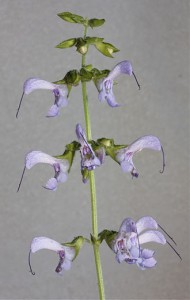 By Preety Panwar, Postdoctoral Fellow at Bromme Lab, CBR
By Preety Panwar, Postdoctoral Fellow at Bromme Lab, CBR
In a recent study published in the British Journal of Pharmacology, Dr. Dieter Bromme and his lab at the Centre for Blood Research (CBR), made an important discovery showing that it is possible to effectively prevent the loss of bone tissues in osteoporosis, while leaving other important molecular mechanisms untouched.
Osteoporosis is a disease caused by weakening of the bones that affects the lives of millions of Canadians. It is a major burden to healthcare systems worldwide and increasing in prevalence as people live longer. Currently available drugs are far from ideal and long term treatment can lead to serious side effects.
Recently, a protein called Cathepsin K has been identified as a novel target for the treatment of osteoporosis. The main role of this protein is the degradation of collagen during normal bone repair and rebuilding. During osteoporosis, this rebuilding process becomes poorly regulated and overactive, leading to a reduction in the strength of the bone.
Several inhibitors of Cathepsin K are currently undergoing clinical trials, however they have been designed to block the entire functional region of the protein. Thus at least two trials have been halted as the drug appears to be inhibiting other key activities of Cathepsin K and leading to significant side effects.
Dr. Bromme and his team investigated whether there is a reduction in bone loss due to the action of DHT1, a non-active site binding inhibitor. Interestingly, DHT1 belongs to a large family of triterpenoids produced in Salvia miltiorrhiza or Red Sage, a herb used in the treatment of osteoporosis in traditional Chinese medicine.
This inhibitor selectively blocks only the therapeutically relevant collagenase activity (breaking down of collagen) by Cathepsin K without interfering with other pathways. The unique advantage of DHT1 is that it only prevents the breakdown of bone, but does not interfere with its activity on other physiologically relevant non-bone proteins.
This study demonstrates that by using the DHT1 inhibitor, it is possible to effectively prevent the loss of bone, while at the same time potentially reducing the side effects caused by alternative inhibitors.



